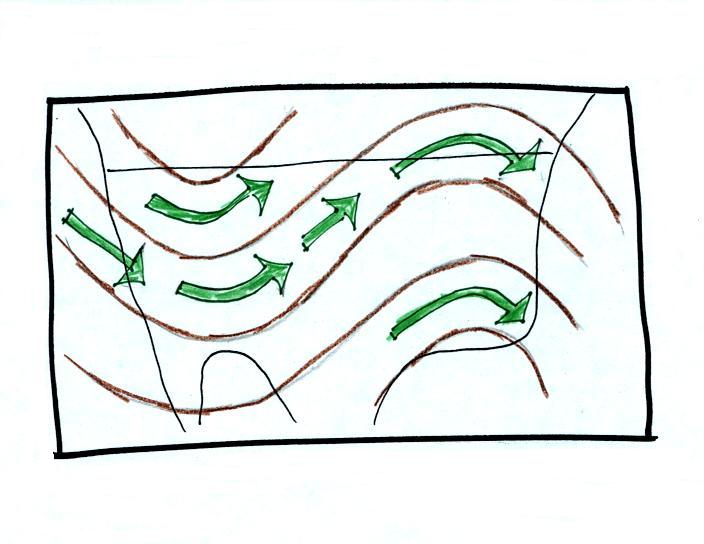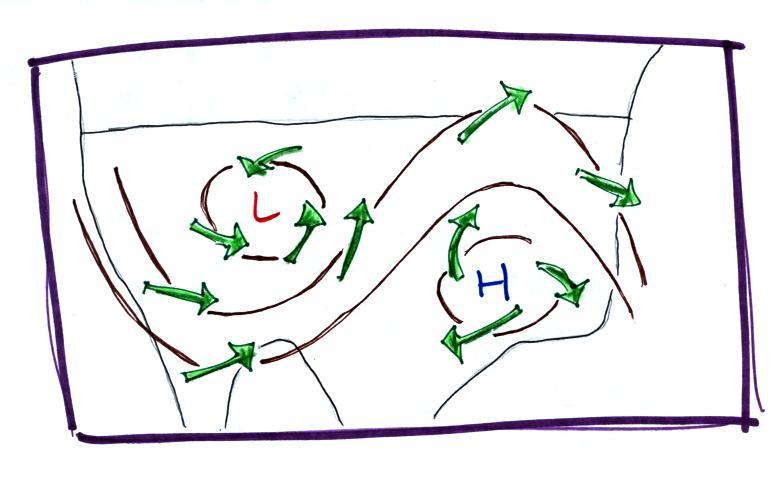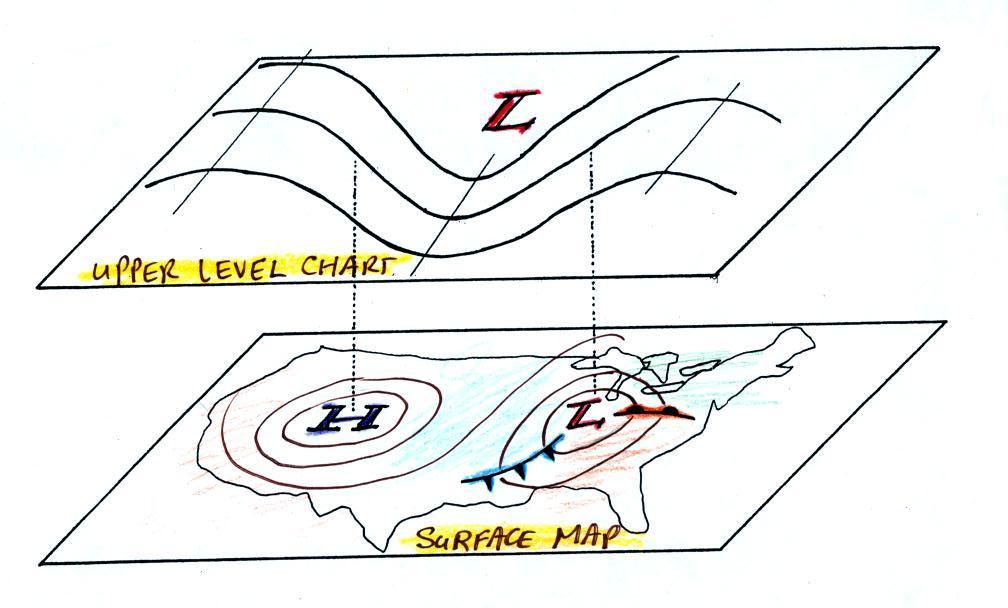
In this first section we'll
just learn 3 basic facts about upper level charts. First
the overall appearance is somewhat different from a surface
weather map. The pattern on a surface map can be complex
and you generally find circular (more or less) centers of high
and low pressure (see the bottom portion of the figure
below). You can also find closed high and low pressure
centers at upper levels, but mostly you find a relatively
simple wavy pattern like is shown on the upper portion of the
figure below (sort of a 3-dimensional view)

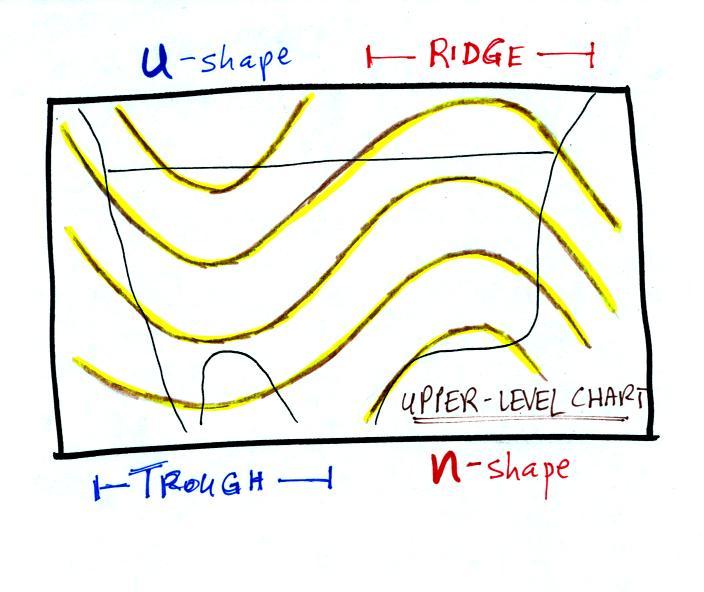
The u-shaped portion
of the pattern is called a trough. The n-shaped portion is called
a ridge.
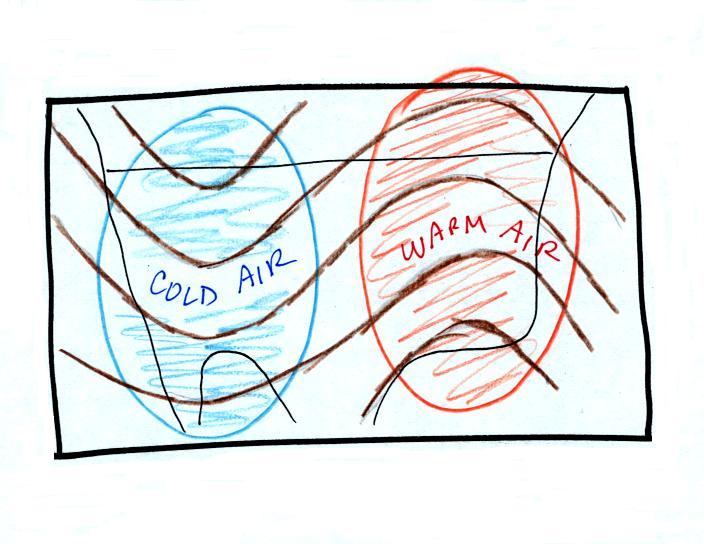
Troughs are produced by large volumes of cool or cold
air (the cold air is found between the ground and the upper
level that the map depicts). The western half of the
country in the map above would probably be experiencing colder
than average temperatures. Large volumes of warm or hot
air produce ridges. We'll see why this is true in "Upper
level charts pt. 2".
